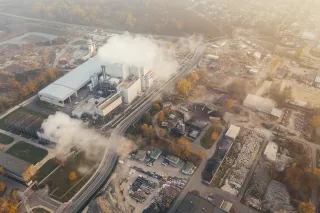Active banners: 0 Visible banners: 0
Forest Monitoring: Introduction to Satellite Monitoring
Provided by: World Resources Institute |Published on: April 27, 2021
Videos
6789101112
Synopsis
- This video explains the basics of Global Forest Watch, a nonprofit organization that uses satellites and automatic data processing to identify areas of deforestation in real-time.

Subjects: Social Studies, Earth and Space Sciences
Authors: The World Resources Institute
Region: Global
Languages: English
Teaching Materials
Positives
- Students will enjoy the beautiful animations throughout the video.
- The video highlights the contributions of the World Resources Institute in monitoring the world's forests.
- Students will learn how satellite technology can be used to remote sense the rate of deforestation globally and collect real-time data to protect forests on a global scale.
Additional Prerequisites
- Many students will be shocked at the statistic that "the world's forests are being destroyed at a rate of fifty soccer fields per minute." Feelings of sadness, anger, frustration, or shock are normal and natural.
Differentiation
- After students view the video and understand the rate of global deforestation, they can use the information to propose urgent local actions on forest protection and tree planting.
- Students could download the Forest Watcher app and work in groups to collect data on local forests.
- Other resources on this topic include this Global Forest Watch Interactive Map, this article about the role of forests in the carbon cycle, and this video about mapping the impact of forests as carbon sinks.
Scientist Notes
Teaching Tips
Standards
Resource Type and Format
About the Partner Provider
-thumb.webp)
World Resources Institute
Established in partnership with the Bezos Earth Fund, WRI’s Electric School Bus Initiative collaborates with partners and communities to build unstoppable momentum toward an equitable transition of the U.S. school bus fleet to electric by 2030, bringing health, climate, and economic benefits to children and families across the country and normalizing electric mobility for an entire generation.
All resources can be used for your educational purposes with proper attribution to the content provider.
Teaching Materials
Educator Support
My Account







